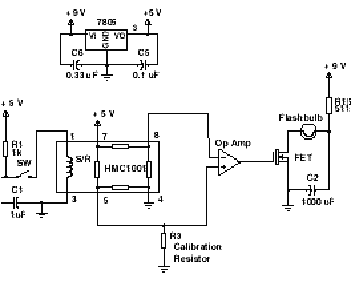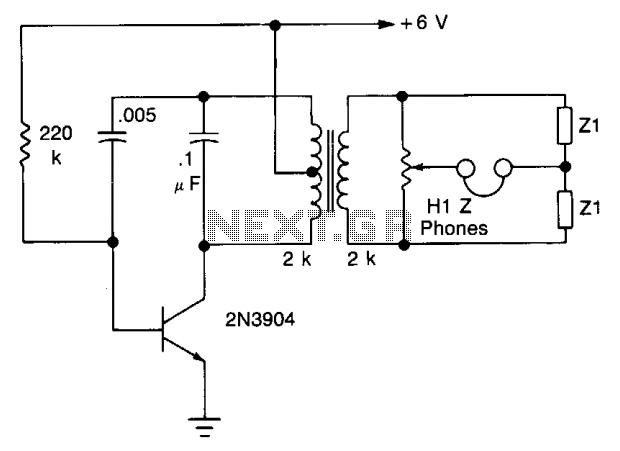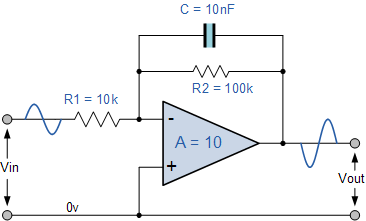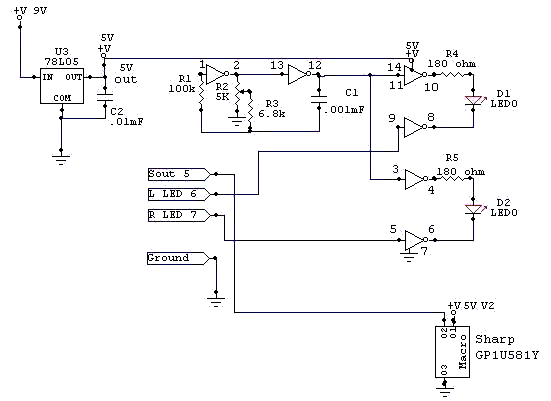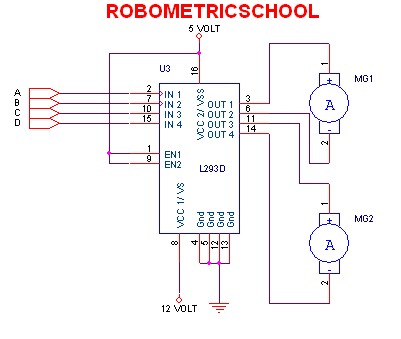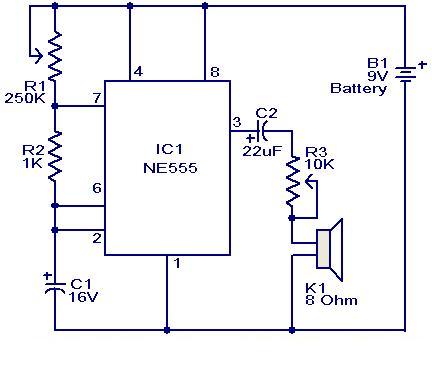
Low humidity is a circuit diagram of CGS-H ceramic humidity sensor configuration
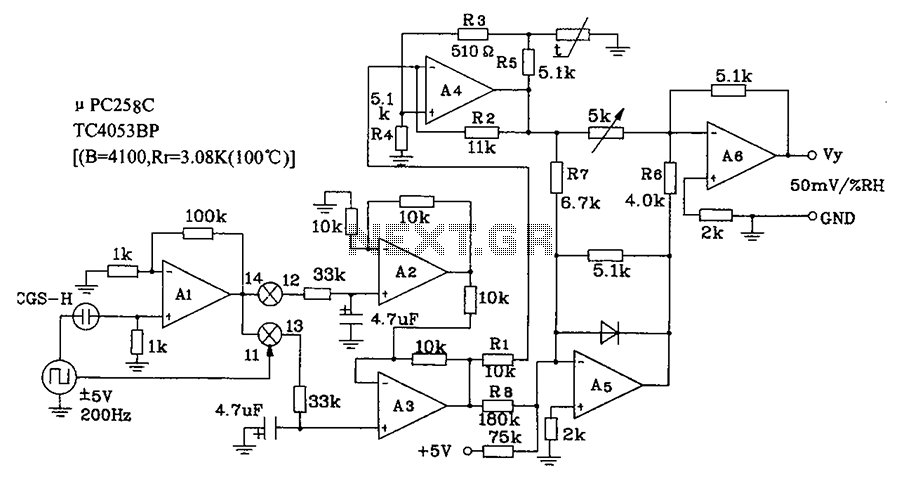
CGS-H ceramic humidity sensor constructed low humidity detection circuit diagram.
The CGS-H ceramic humidity sensor is designed to detect low humidity levels within a specified range. This sensor operates on the principle of changes in capacitance that occur with variations in humidity. The circuit diagram for the humidity detection system typically includes the CGS-H sensor, a microcontroller or an operational amplifier for signal processing, and additional components such as resistors, capacitors, and possibly a display unit for output.
In the circuit, the CGS-H sensor is connected to a voltage divider configuration that allows it to convert the humidity levels into a corresponding voltage signal. This signal is then fed into an analog-to-digital converter (ADC) within the microcontroller, which interprets the data and can trigger alerts or activate other devices based on the defined humidity thresholds.
The circuit may also include a power supply section, ensuring that the sensor and associated components receive the appropriate voltage levels. Filtering capacitors are often added to stabilize the power supply and reduce noise, which can affect the accuracy of the measurements. Additionally, a pull-up or pull-down resistor may be used to ensure stable readings from the sensor.
For display purposes, an LED or an LCD can be integrated into the circuit to provide real-time feedback on humidity levels, enhancing user interaction. This comprehensive setup allows for efficient monitoring of environmental conditions, making it suitable for applications in HVAC systems, greenhouses, and various industrial processes where humidity control is critical. CGS-H ceramic humidity sensor constructed low humidity detection circuit diagram .
The CGS-H ceramic humidity sensor is designed to detect low humidity levels within a specified range. This sensor operates on the principle of changes in capacitance that occur with variations in humidity. The circuit diagram for the humidity detection system typically includes the CGS-H sensor, a microcontroller or an operational amplifier for signal processing, and additional components such as resistors, capacitors, and possibly a display unit for output.
In the circuit, the CGS-H sensor is connected to a voltage divider configuration that allows it to convert the humidity levels into a corresponding voltage signal. This signal is then fed into an analog-to-digital converter (ADC) within the microcontroller, which interprets the data and can trigger alerts or activate other devices based on the defined humidity thresholds.
The circuit may also include a power supply section, ensuring that the sensor and associated components receive the appropriate voltage levels. Filtering capacitors are often added to stabilize the power supply and reduce noise, which can affect the accuracy of the measurements. Additionally, a pull-up or pull-down resistor may be used to ensure stable readings from the sensor.
For display purposes, an LED or an LCD can be integrated into the circuit to provide real-time feedback on humidity levels, enhancing user interaction. This comprehensive setup allows for efficient monitoring of environmental conditions, making it suitable for applications in HVAC systems, greenhouses, and various industrial processes where humidity control is critical. CGS-H ceramic humidity sensor constructed low humidity detection circuit diagram .
